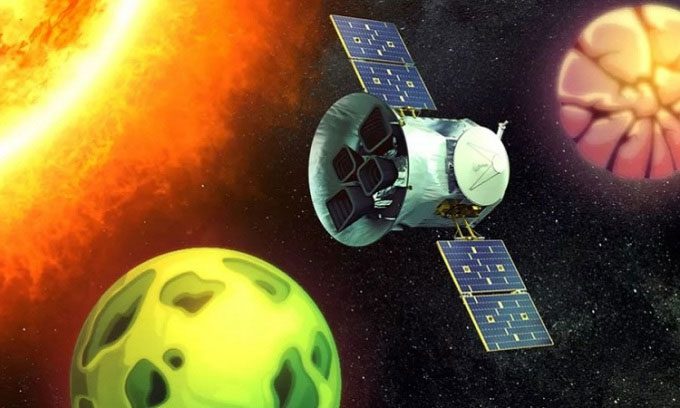NASA’s TESS Satellite Discovers 2 Earth-sized Rocky Planets Orbiting a Small Dwarf Star.

Simulation of two exoplanets orbiting the star HD 260655. (Image: MIT)
A star system with 2 Earth-like planets is located just 33 light-years away from our planet. This is one of the closest star systems to Earth, discovered by NASA’s Transiting Exoplanet Survey Satellite (TESS) in October 2021. Scientists took several months to confirm that the periodic dimming of the star HD 260655 was caused by planets passing in front of its disk. The research team announced their findings at a meeting on June 16 of the American Astronomical Society in Pasadena, California, USA.
The neighboring star system contains “at least” 2 rocky planets roughly the size of Earth, but it is unlikely that either planet supports life. Calculations of the planets’ orbits reveal that both orbit the star at distances too close for liquid water to exist on their surfaces. In fact, one of the planets, HD 260655b, is 1.2 times larger than Earth and takes only 2.8 days to complete an orbit around its host star. The other planet, HD 260655c, is 1.5 times larger than Earth and requires 5.7 days to finish one orbit.
The host star of these two planets is an M dwarf, a type of tiny star that is only 1/10 the size and brightness of the Sun. However, the surface temperatures on the planets can reach up to 437 and 548 degrees Celsius. According to Michelle Kunimoto, an astronomer at the Massachusetts Institute of Technology, these temperatures are far too high for life to exist.
Nevertheless, the two planets still offer a new opportunity to learn more about Earth-like celestial bodies beyond our solar system. Kunimoto stated that both planets in the star system are among the best targets for atmospheric studies due to the brightness of the host star. Scientists will continue to investigate the star system to search for additional planets located farther from the star.


















































